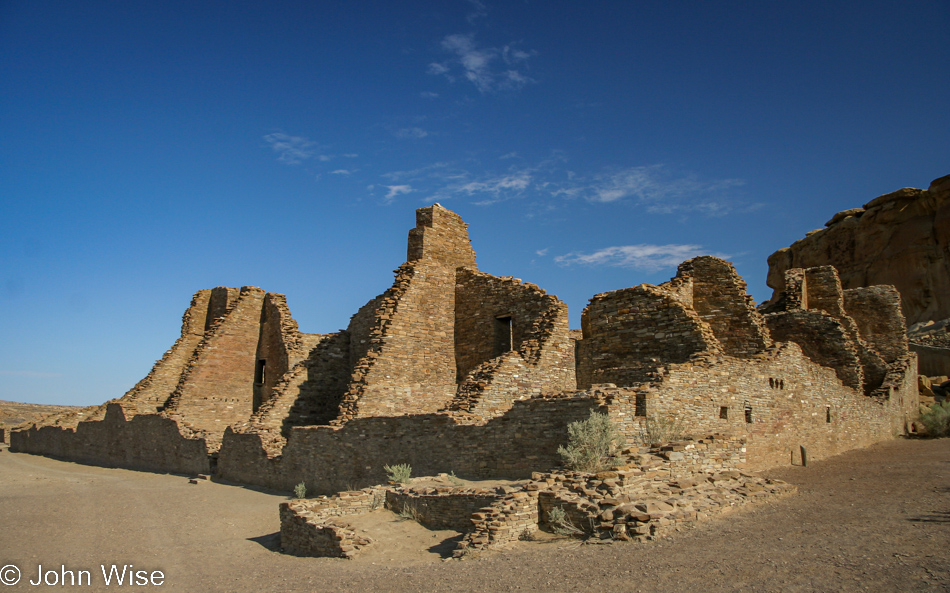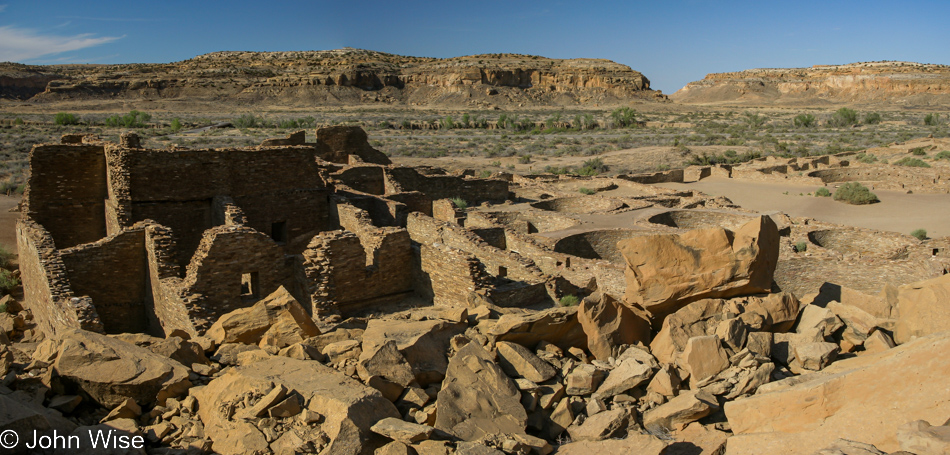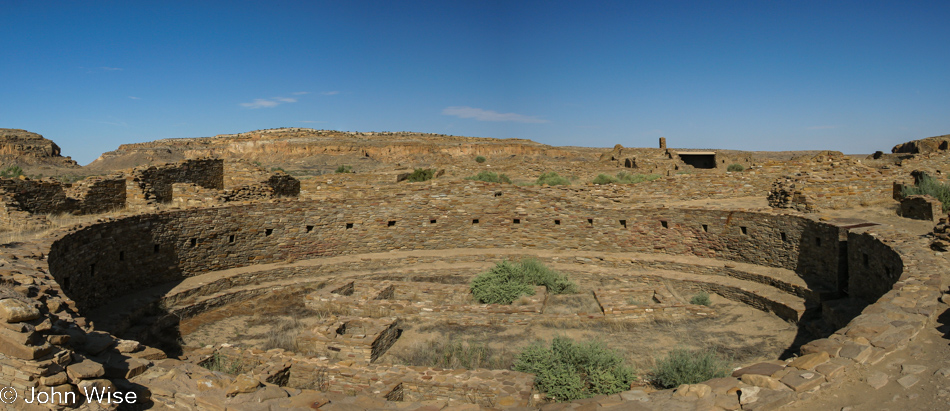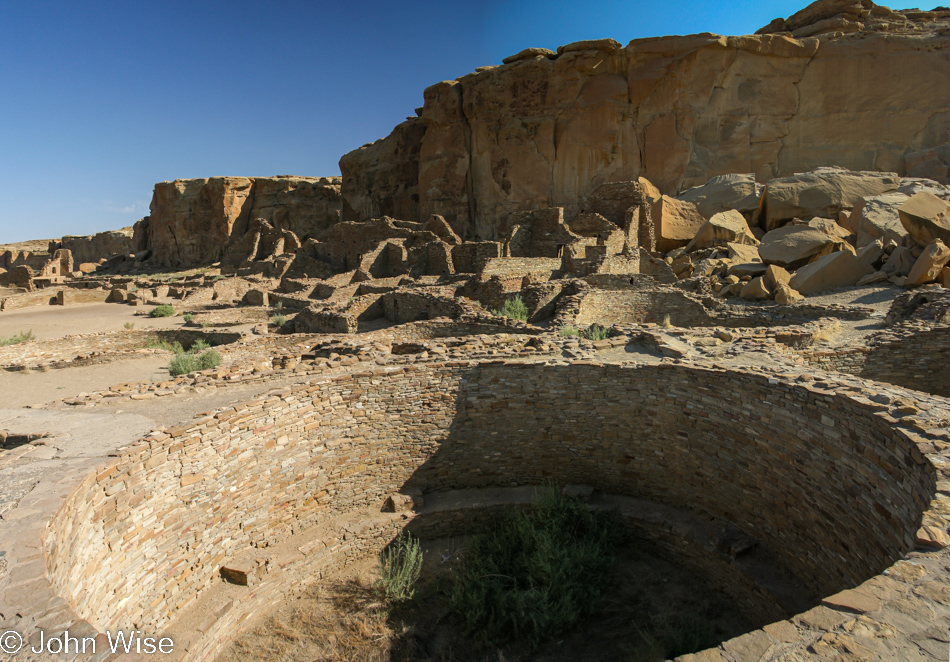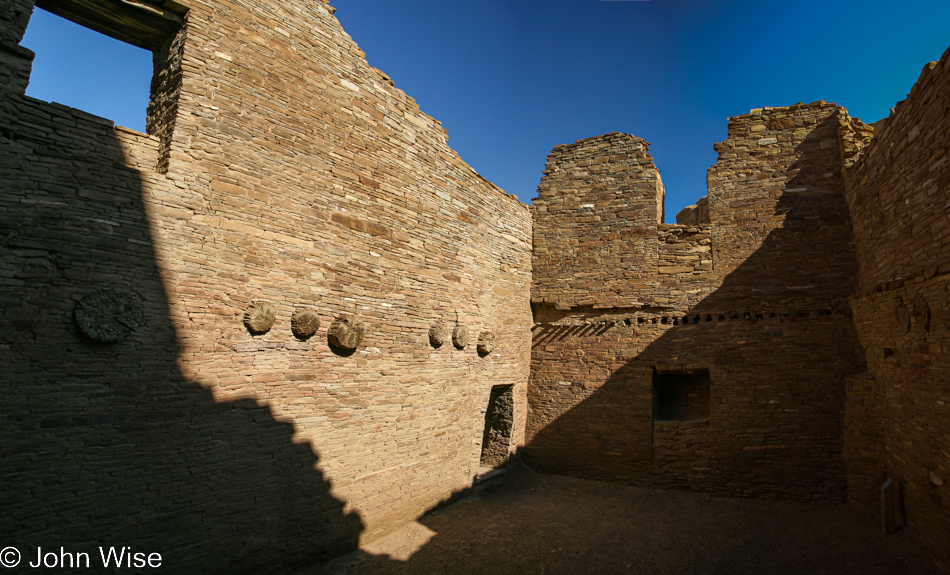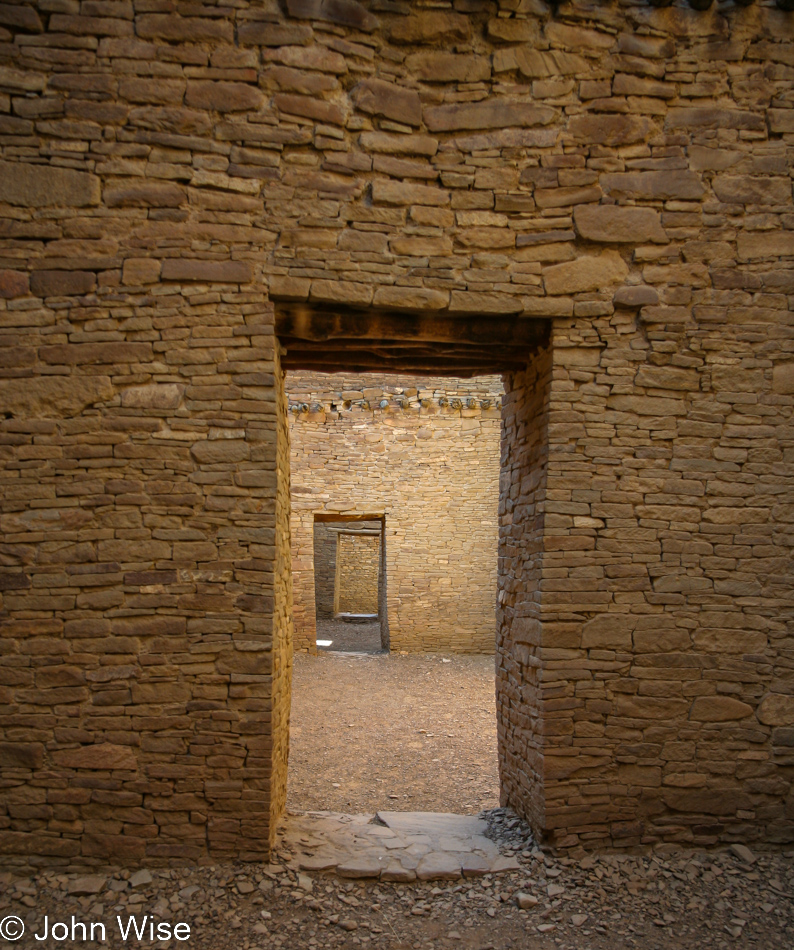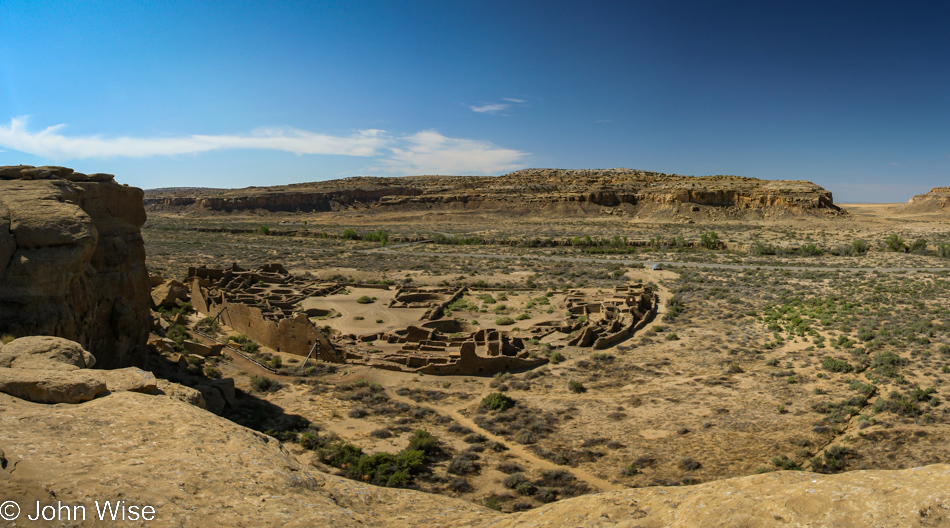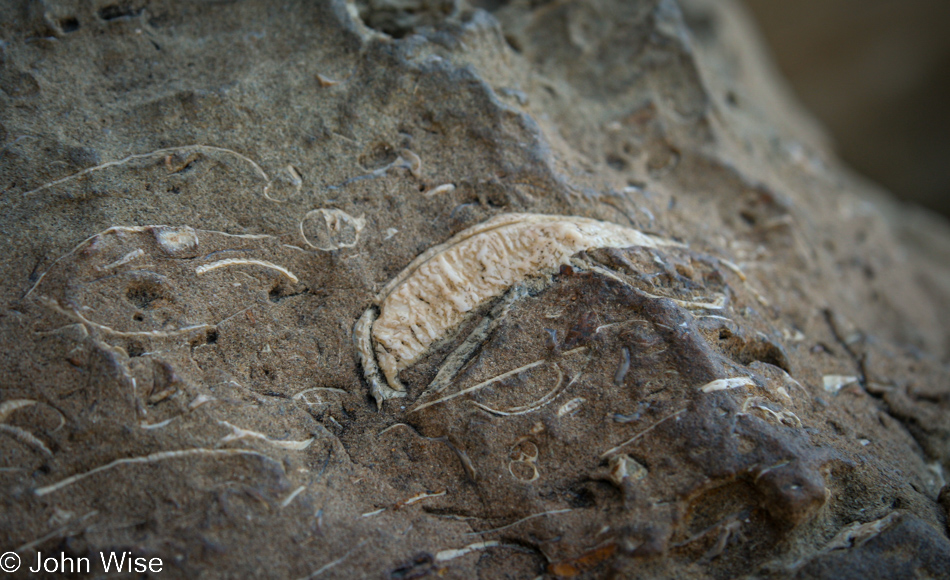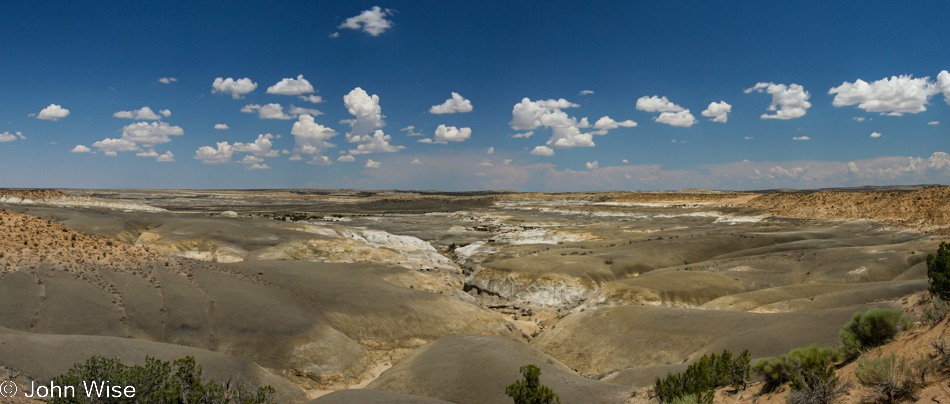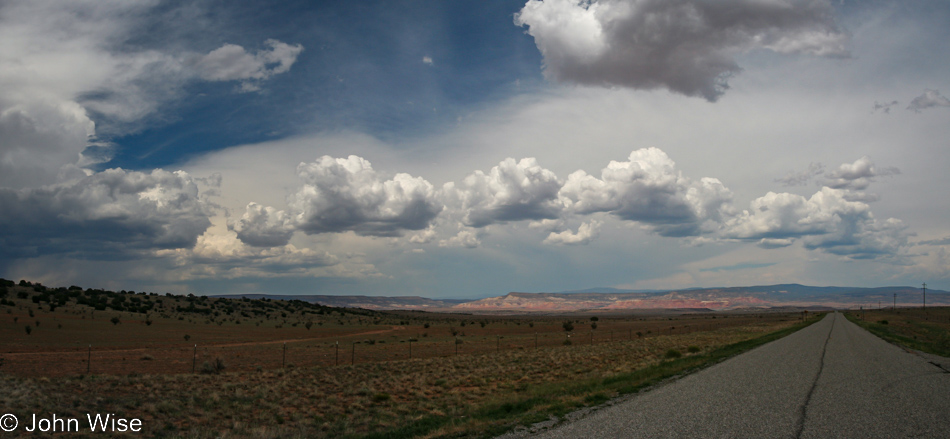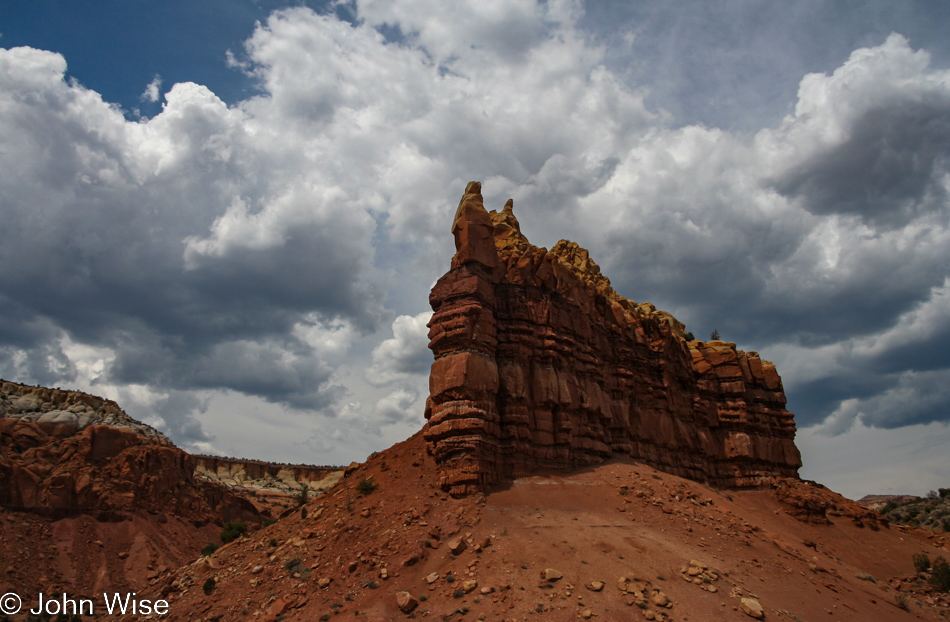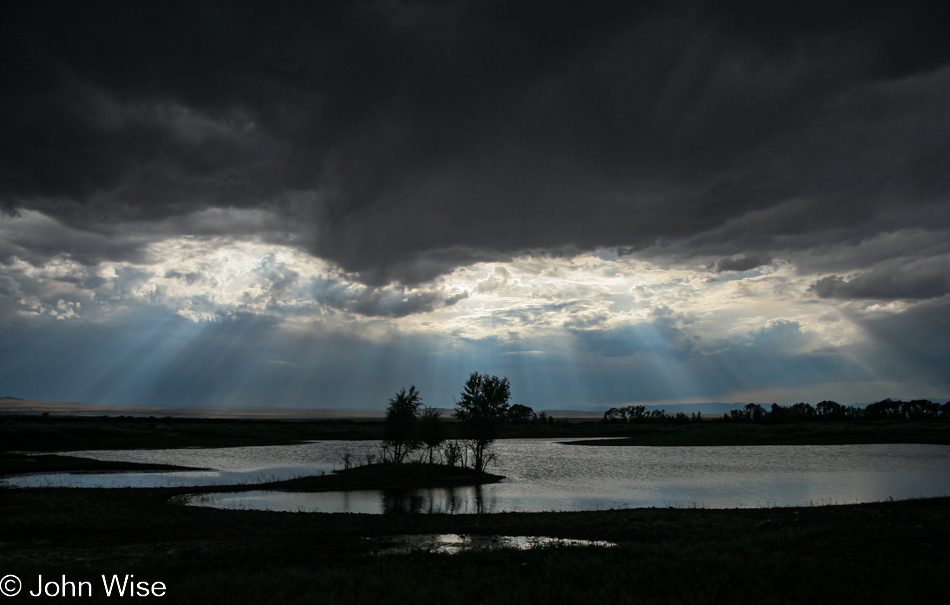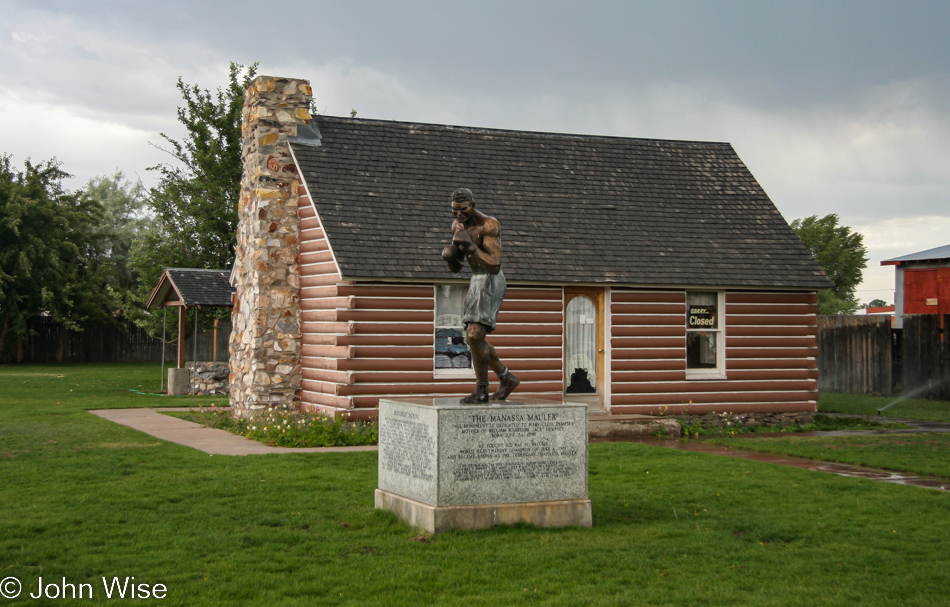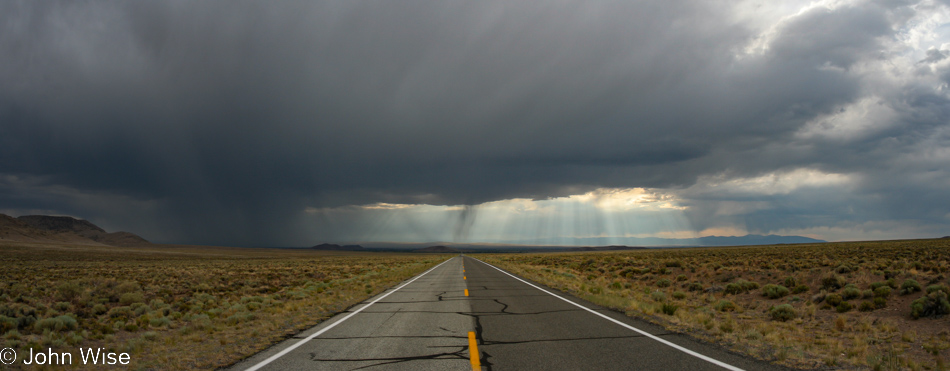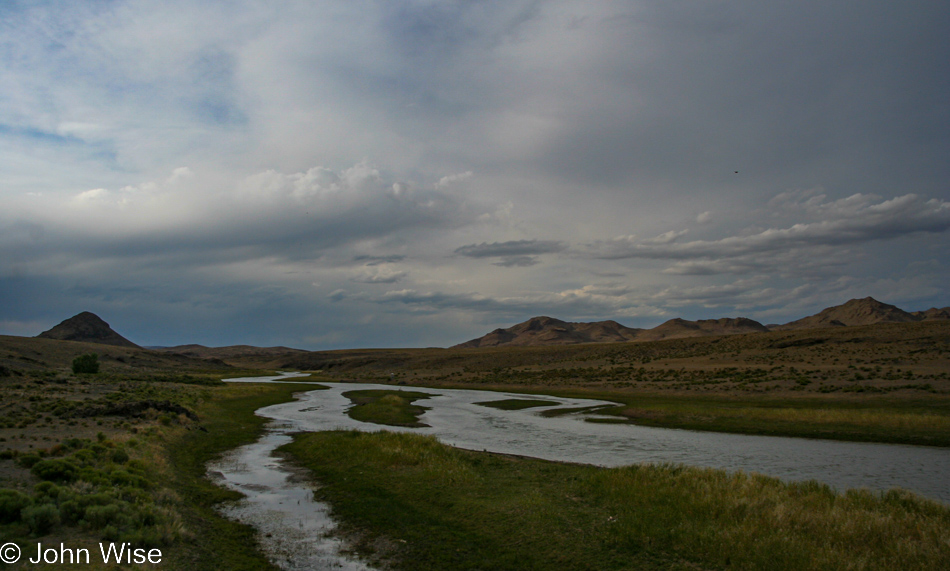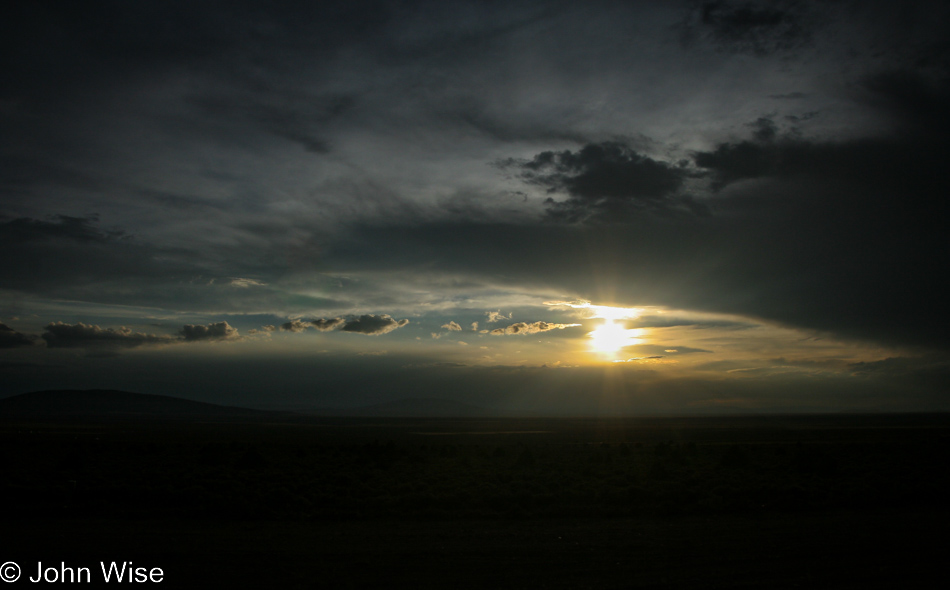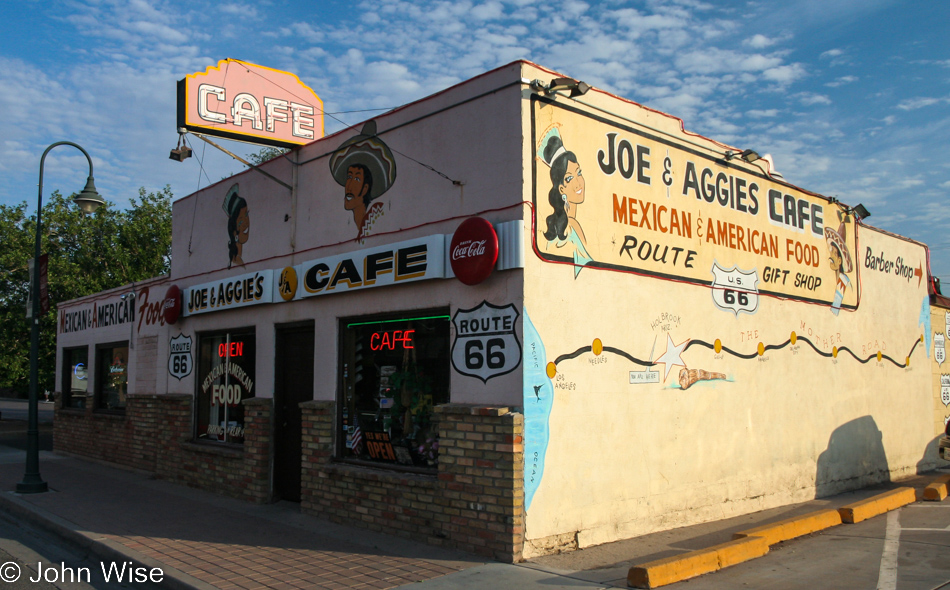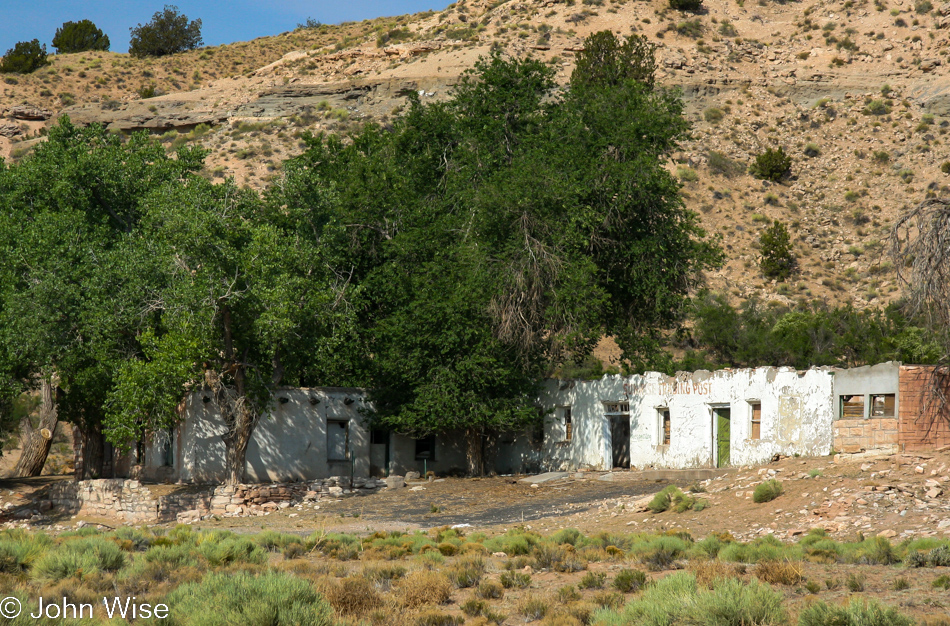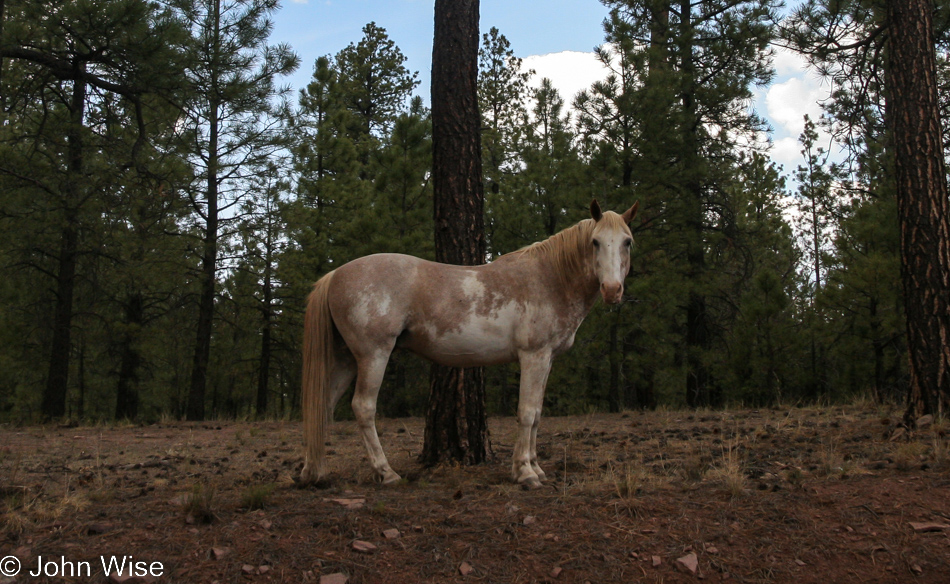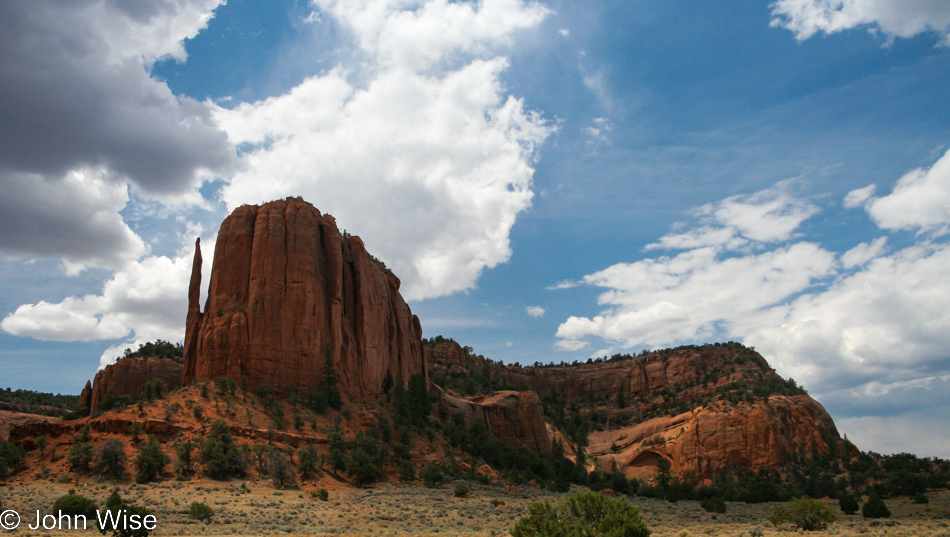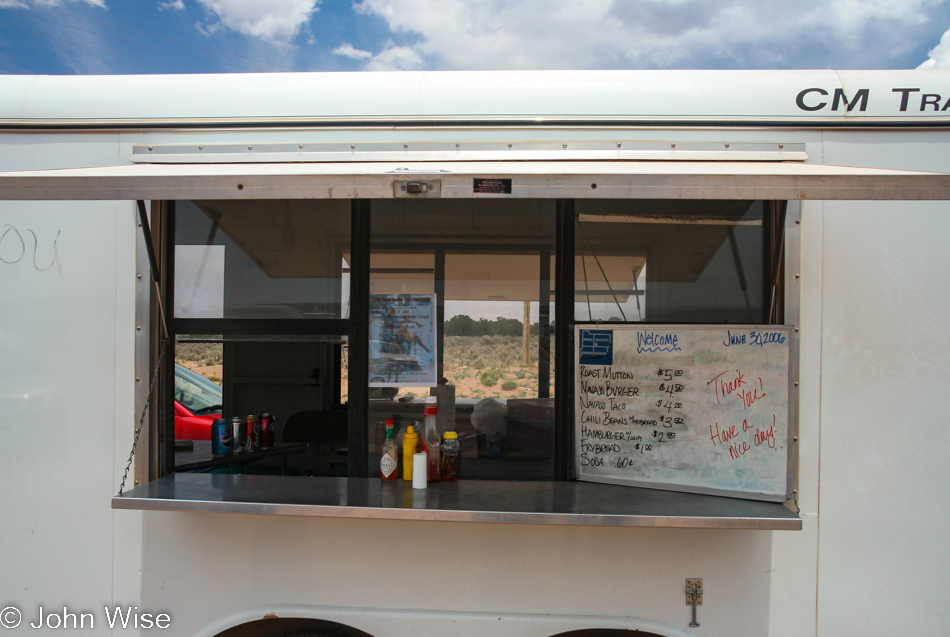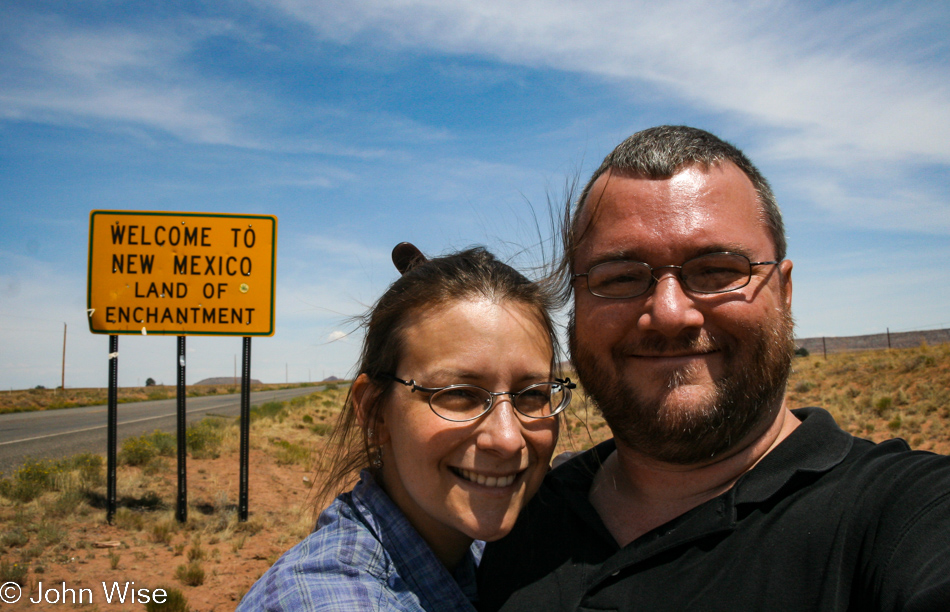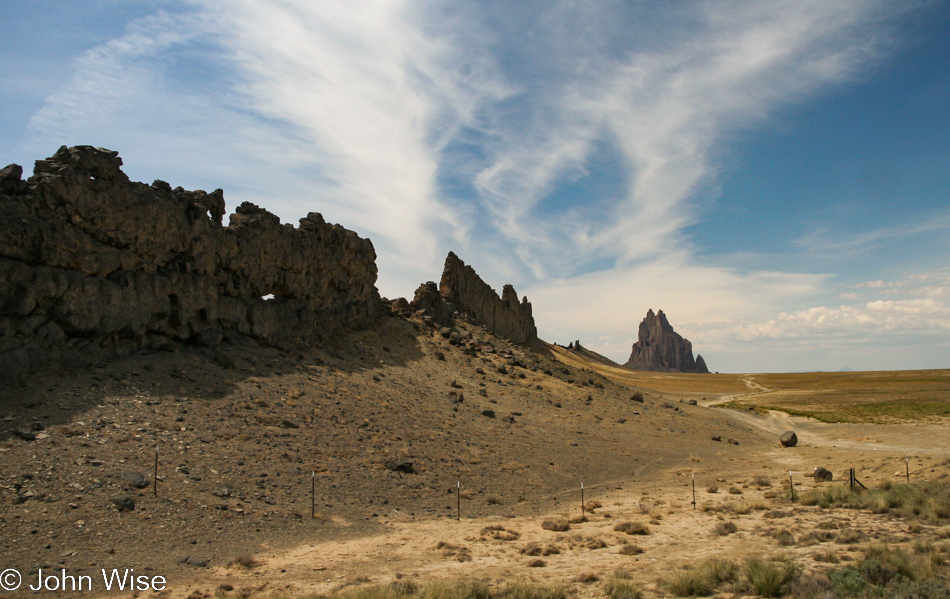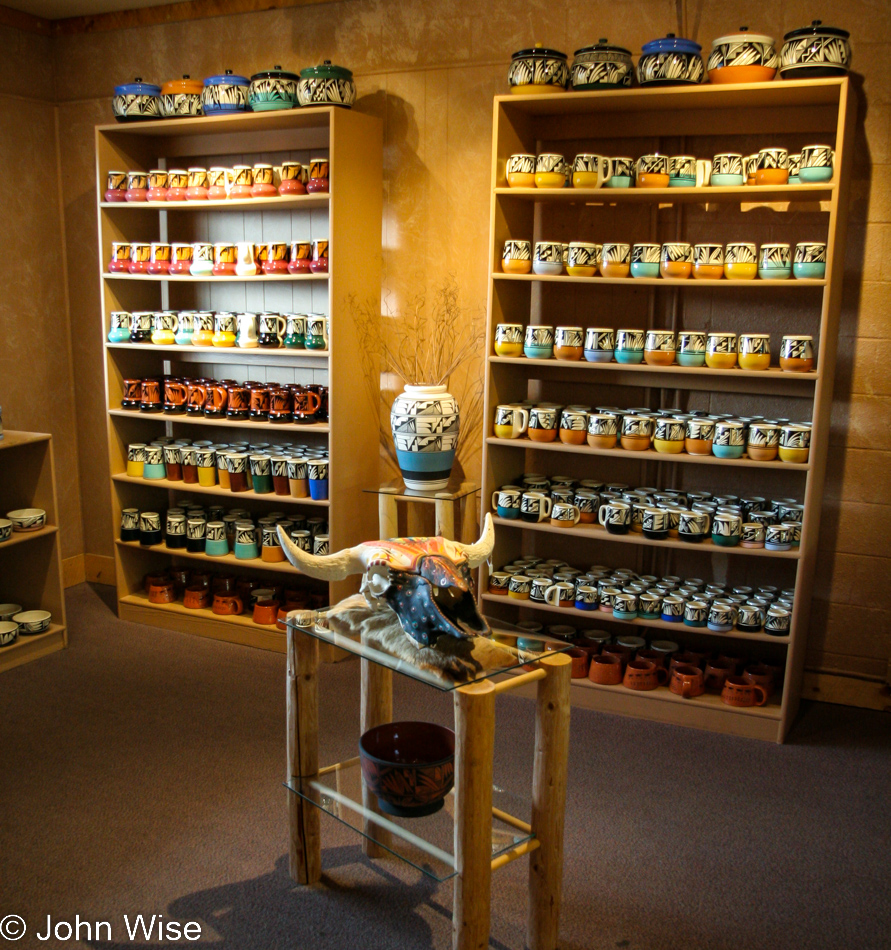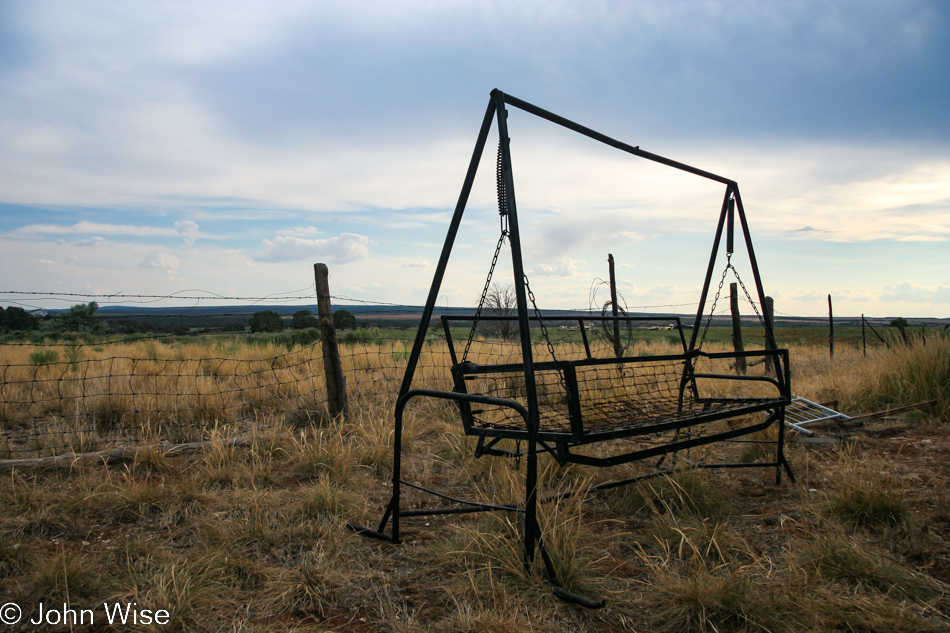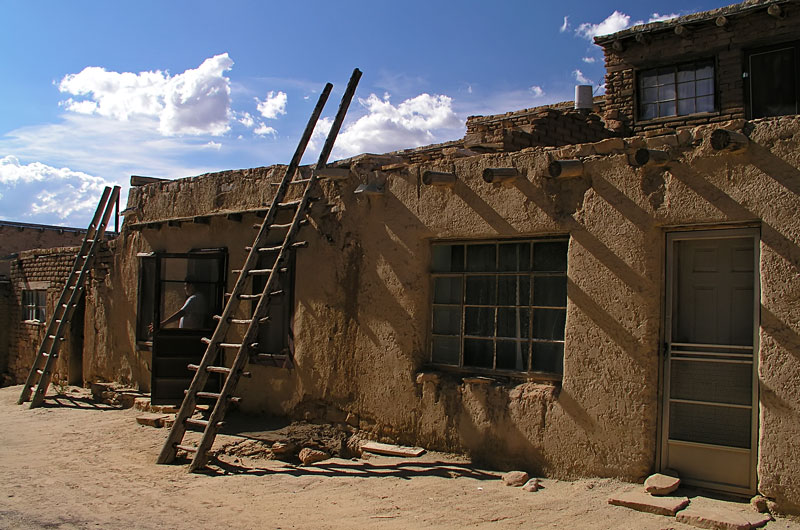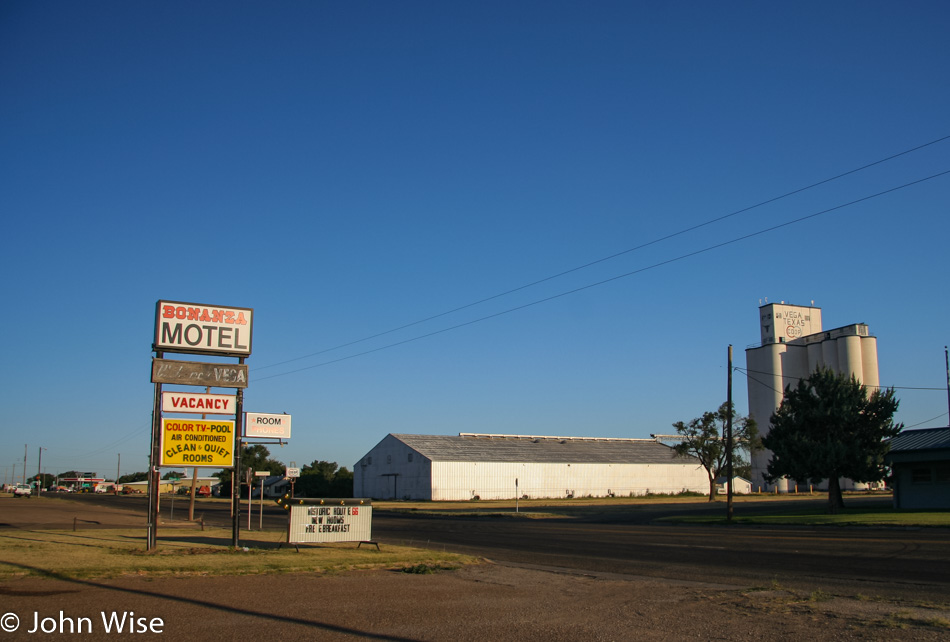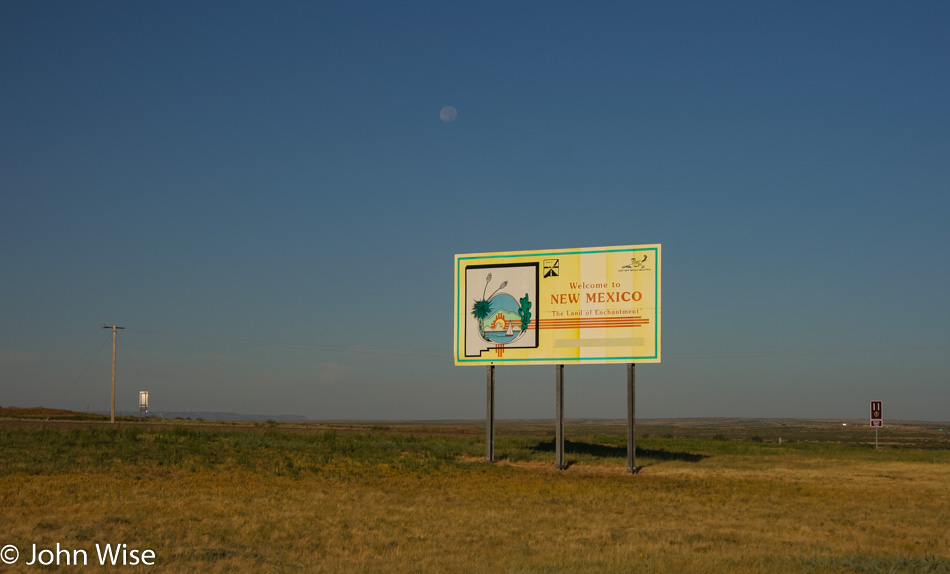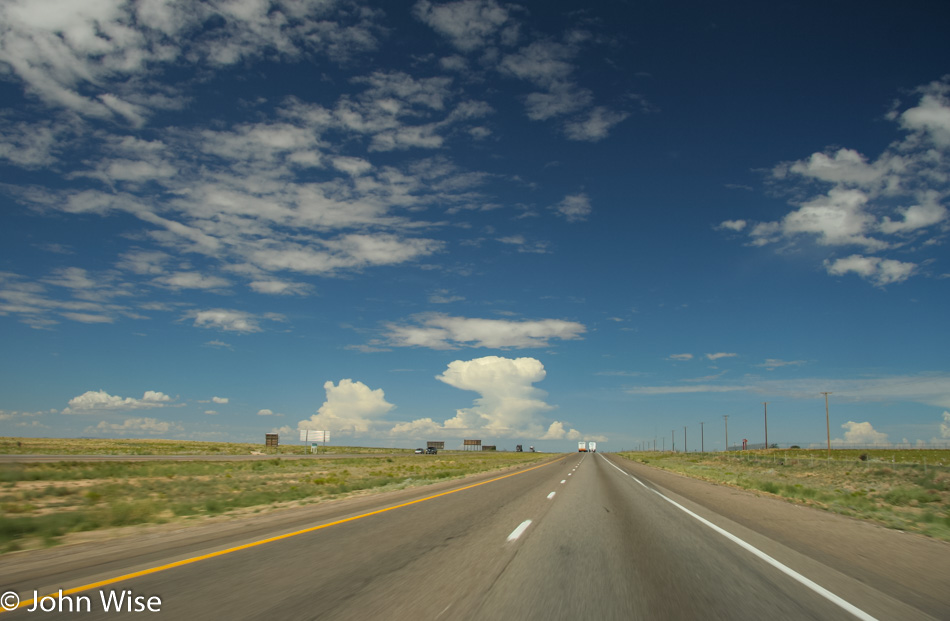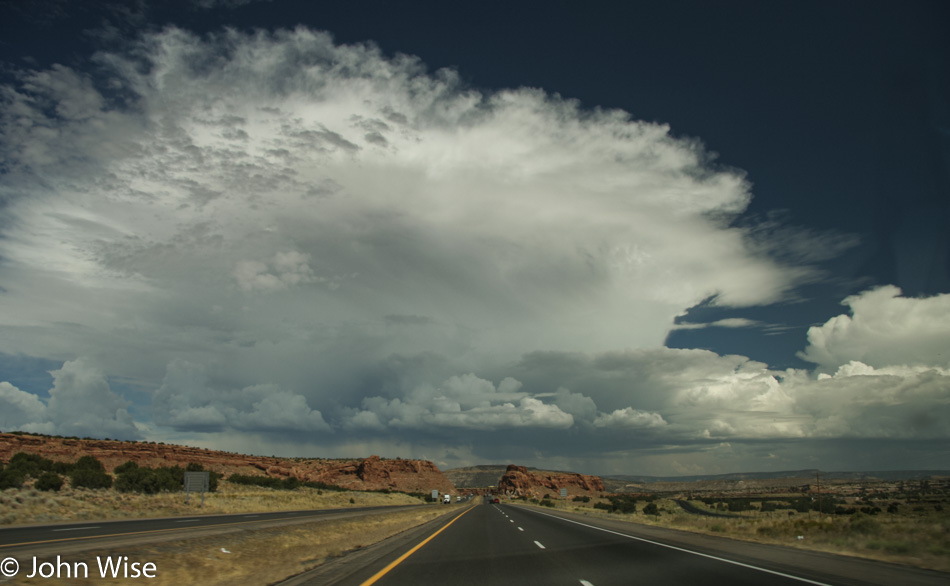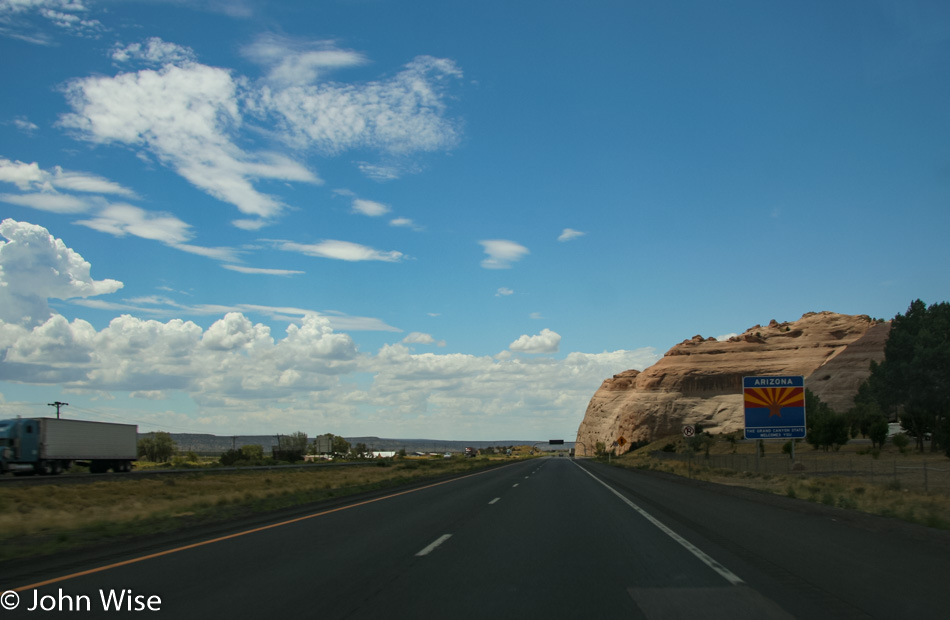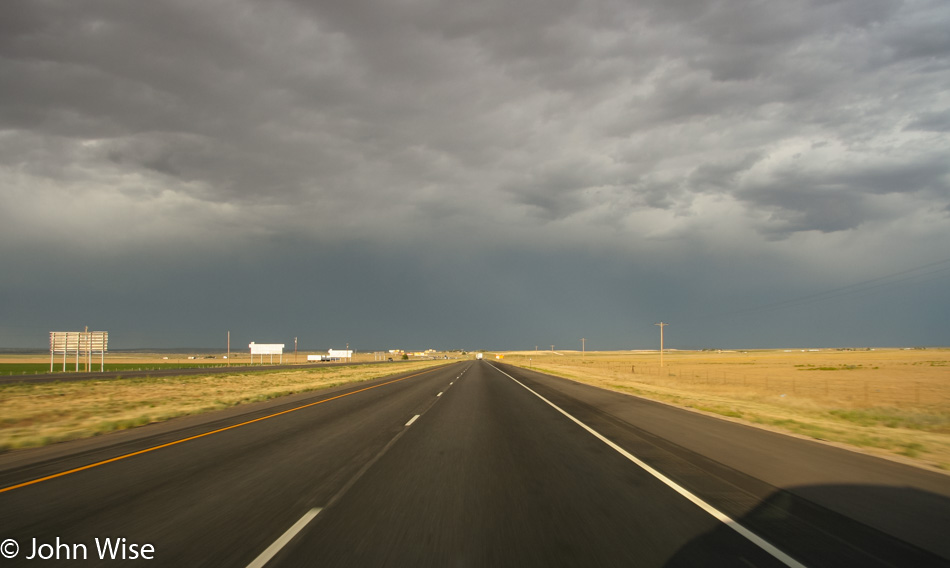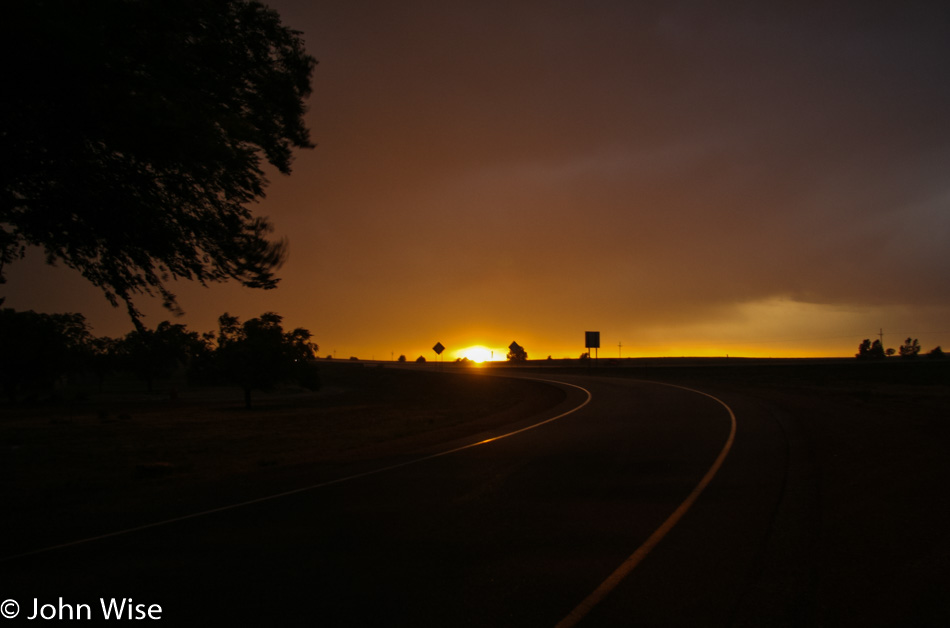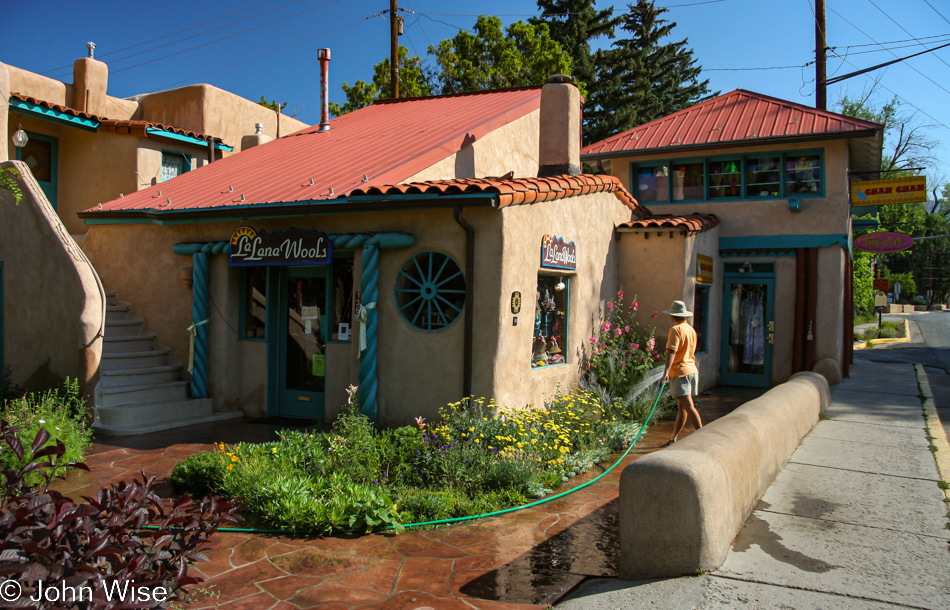
Timewarp out of the summer of 2006 into January 2023 because that’s when I’m sitting down to transform this ancient blog post that, up until this time, was but one photo, the one at the very bottom, paired with a minimal amount of text. As I’ve stated the same in many other posts, back in the day, posts saturated with a lot of photos were taxing people’s devices and our internet bandwidth, so I kept things brief. But here I am a thousand years later (as measured in internet time), and I started dragging old photos out of their digital tomb and presenting some of my favorite zombies.
As was our routine in our impetuous youth, we sped across the landscape and stayed on the move. This day would have been no different as we obviously left Taos early in the day. Well, we left the town proper…
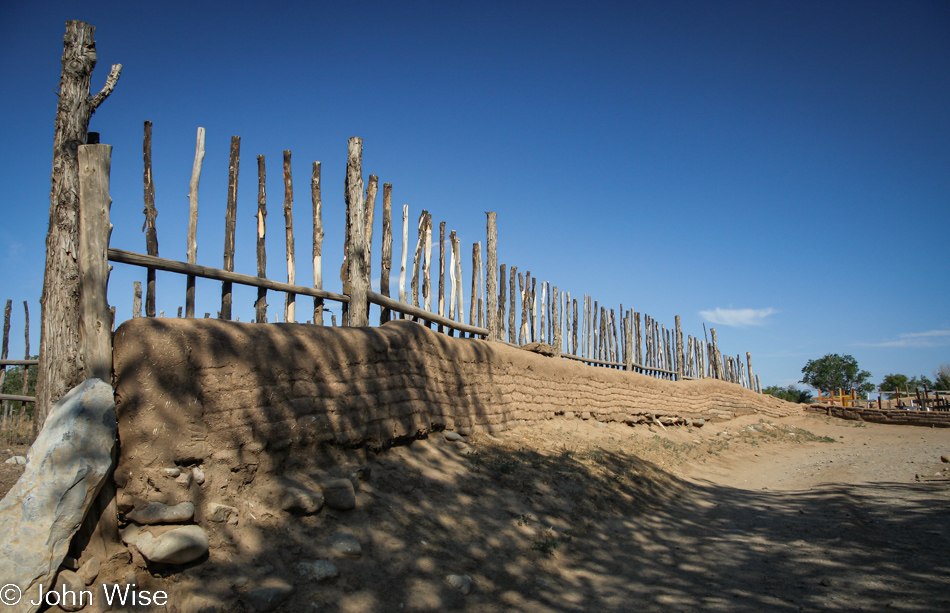
…as we were on our way to Taos Pueblo, a few miles up the road.
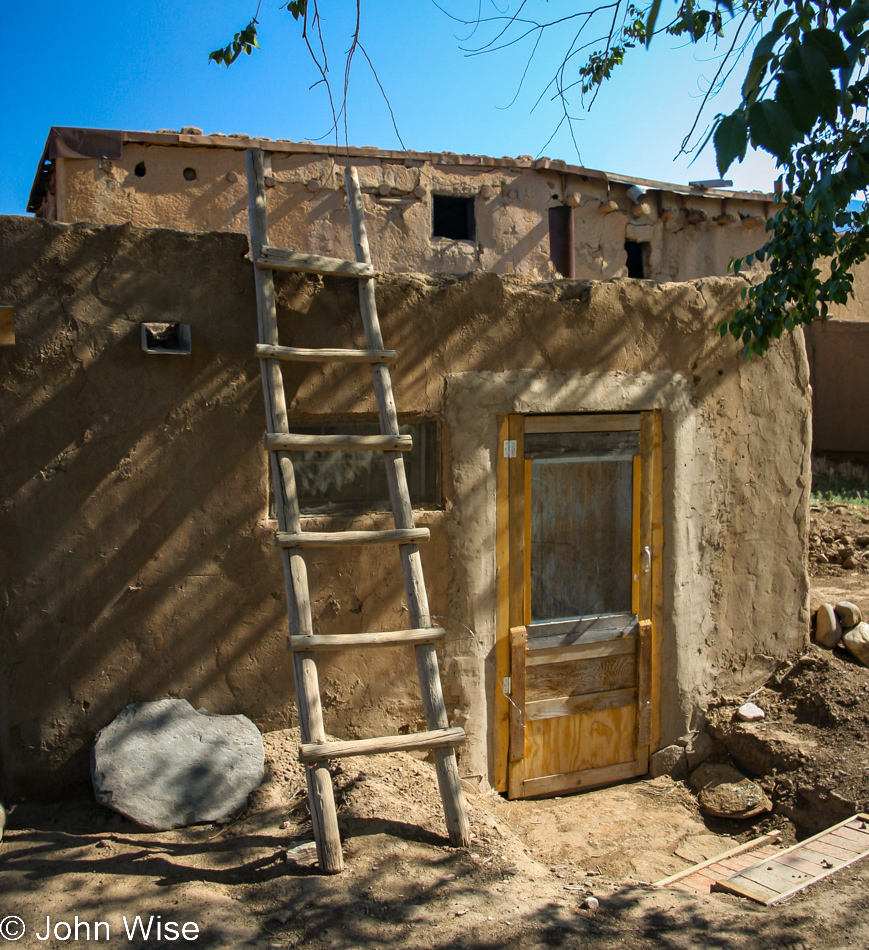
For over 1,000 years, this village has been occupied by the indigenous people who call it home. I have mixed feelings right now as I consider that I’m looking in on their lives as a curiosity, but then again, I do the exact same thing on the streets of California or if I visit a forest. I have an inherent curiosity that wants to know what’s what. If I could find an angle to be invited through this door to join in for a meal and an hour or two of listening to a story about those who lived here prior to the current inhabitants, I would jump at that opportunity.
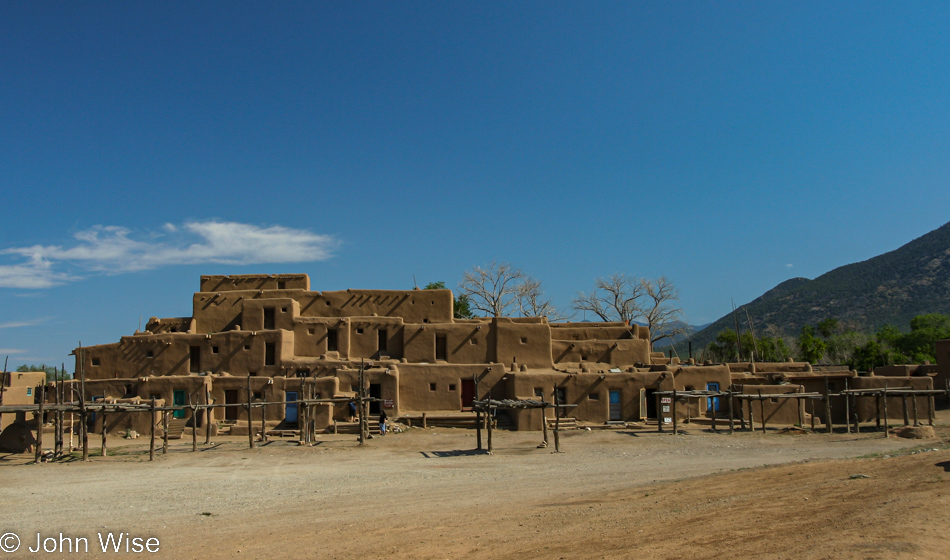
This is what we all come to see: the Hlauuma (North House) of Taos Pueblo. We were too early for vendors to be present, the shops to be open, nor were we able to sign up for one of the tours that hadn’t begun yet.

I believe we are near Angel Fire, New Mexico, and I have the vague memory that as we passed through, we’d made a mental note, apparently quickly forgotten, that we should return to the area as it was extraordinarily beautiful.
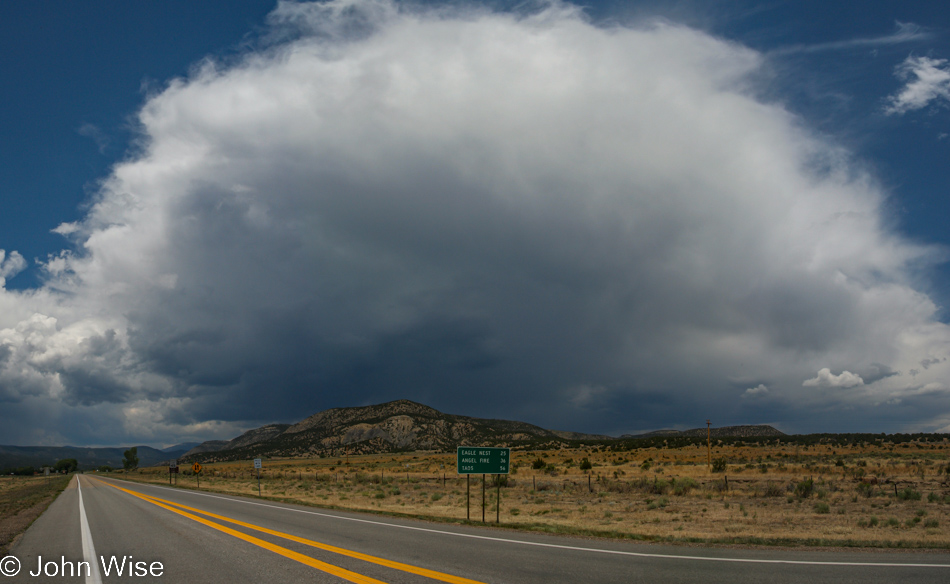
Reaching Cimarron, New Mexico, we had a choice: go straight ahead and reach an interstate or turn left and go north on a secondary route, we opted for the main highway as we had a ways to go today. As for the photo, this is looking back to whence we came.
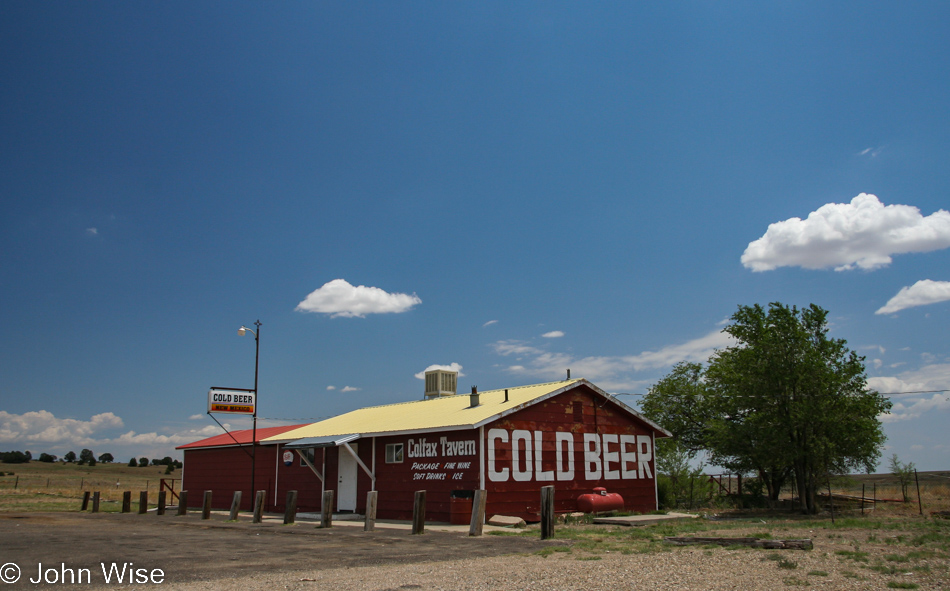
Get real, we did NOT take the interstate! We are plying U.S. Route 64, a two-laner taking us by wonderful places such as the Colfax Tavern, where they call their lone outpost next to the road “Cold Beer,” though, in reality, it’s at the farthest western point of Maxwell, New Mexico.

During our road trips across America, Caroline and I try to respect and appreciate the culture and beautiful land as best we can. Out on these nearly barren plains, one can almost imagine that just 150 years ago, there were 60 million bison eating their way across a sea of grass. It is a tragic shame that the imagination of so many overstimulated TV addicts cannot see the wonder that exists even in places like the plains where seemingly nothing much at all is happening, but an entire complex ecosystem once thrived.
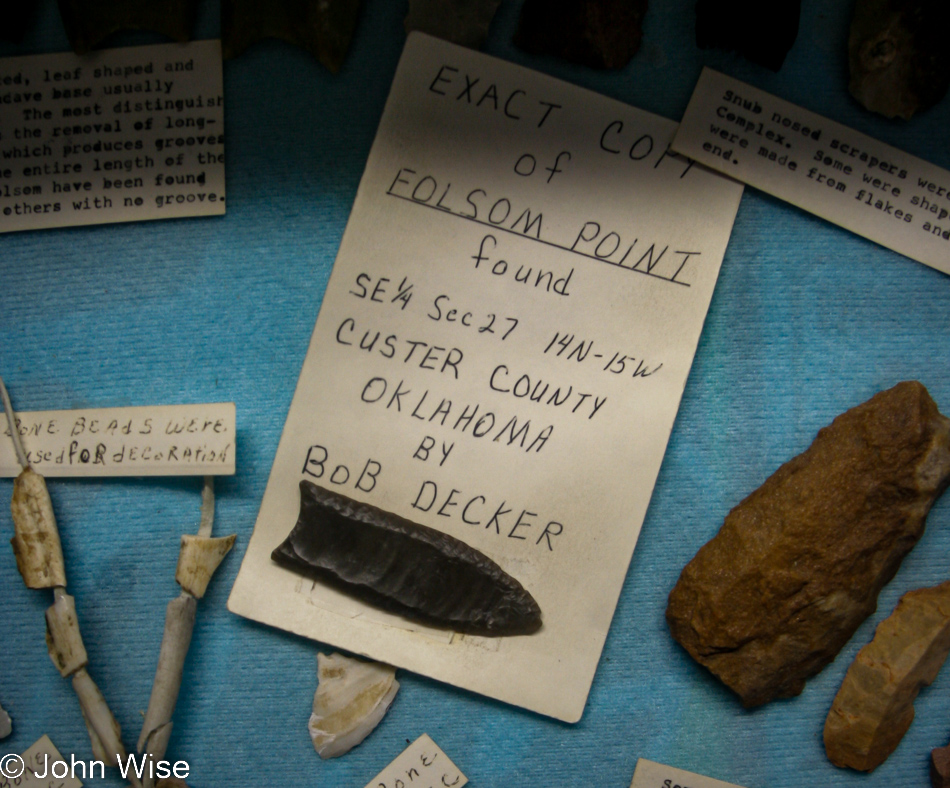
We take a small, lonely road called NM-72 from Raton, New Mexico, to Folsom, the site of the famous archeological dig of the early 20th century, where it was determined that humans had lived in North America for nearly 10,000 years. Six years after this find, and 170 miles southeast near Clovis, New Mexico, a Clovis point was unearthed, dating Native American occupation of North America back 13,500 years. A long history of Native Americans exists in the United States but is largely ignored. Current thinking places humans in North America for about 20,000 years now, but our (white) ancestors discovered America.
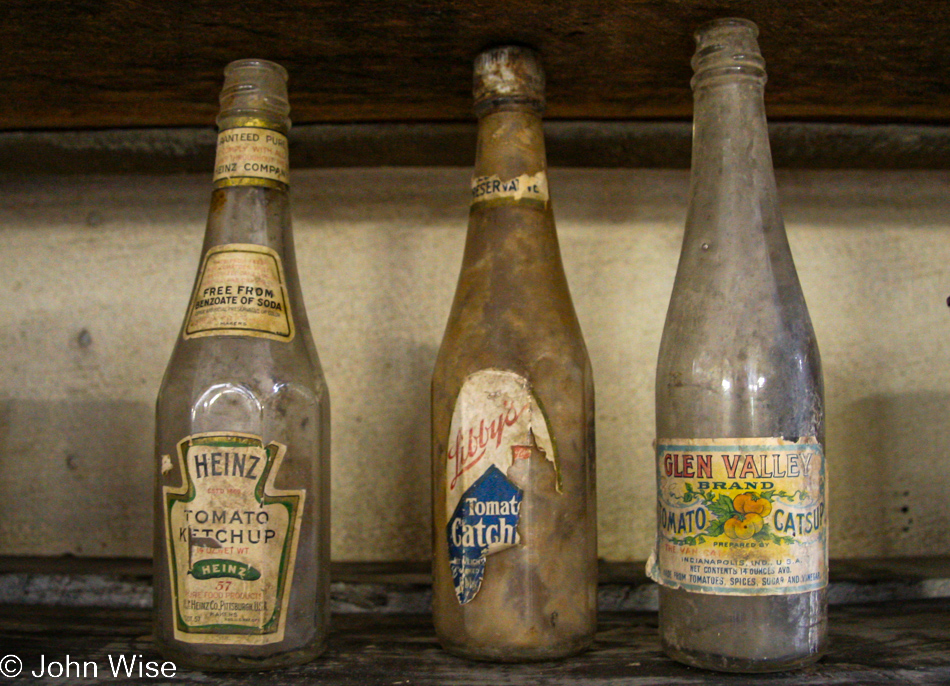
Maybe if the indigenous peoples of North America had left empty ketchup bottles in their wake, we could have taken them seriously, or as Eddy Izzard once said (I’m paraphrasing), without a flag, the land was up for grabs.

The weather on Capulin Volcano forced us to stay in our car; we drove up, we drove down, and we were gone.
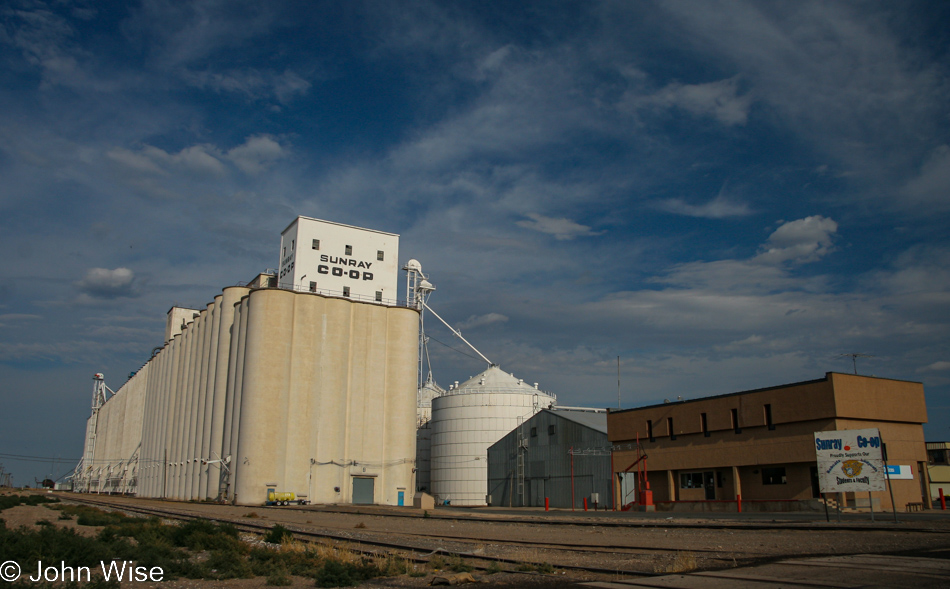
If this is the biggest grain silo we’ve ever seen, we must be in Texas, and from the name atop those silos, you can deduce we are passing through Sunray.
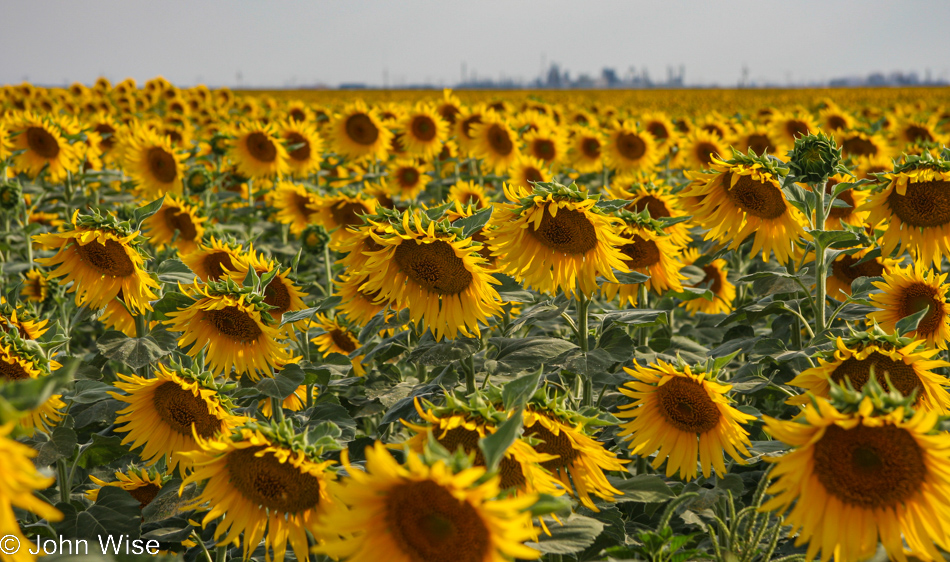
After Sunray, we arrive at sunflowers. Funny how sunflowers are so big and happy looking, and yet, as they fill the view with their incredible splash of color, they offer nothing in the way of scent.
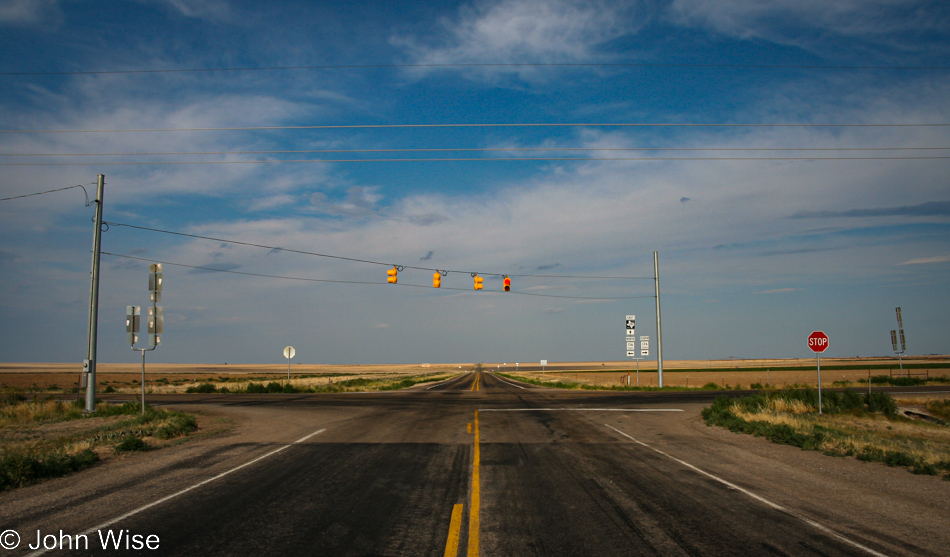
South of Morse, Texas, at the intersection of Farm to Market Road 281 and Texas Route 136. Now, we are really in the middle of nowhere.
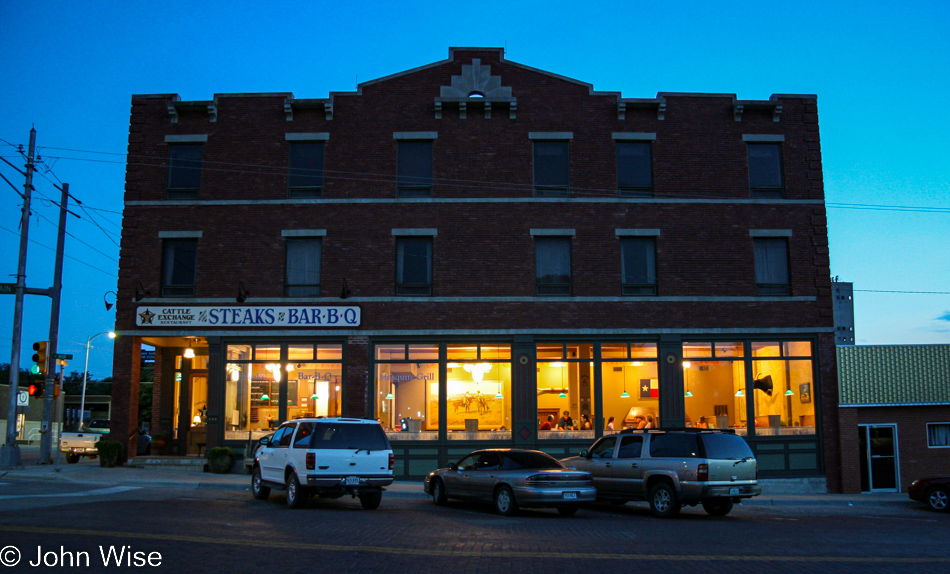
About an hour later, I’m pulling up and introducing Caroline to the Cattle Exchange Restaurant in Canadian, Texas, where my mother and I first ate the best ribeye steak I’d ever had. Wouldn’t you know it though, Caroline is a vegetarian, and while she agreed that the bread pudding, bread from a nearby bakery, the salsa, and baked potato were all superb, she does not have an opinion about their amazing steaks, though she does see that it brings her husband incredible joy.
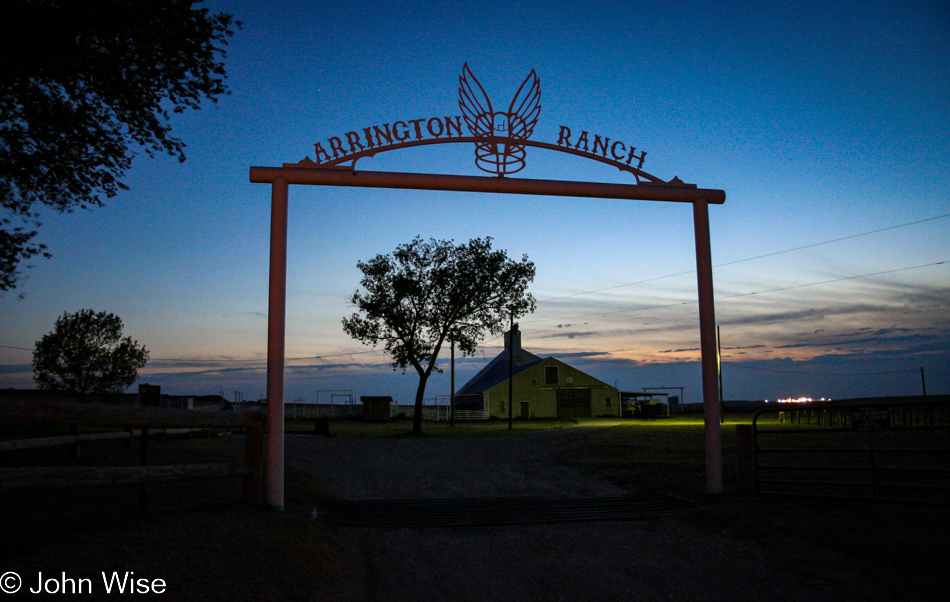
And here we are at our lodging, also in Canadian, Texas. This is the 5,400-acre home of the Arrington Ranch but also this gate and barn figured in the Tom Hanks film Castaway, as did the wings the young woman in the film was making. I’ll share more about this place tomorrow, but first, I must recover from a food coma.
